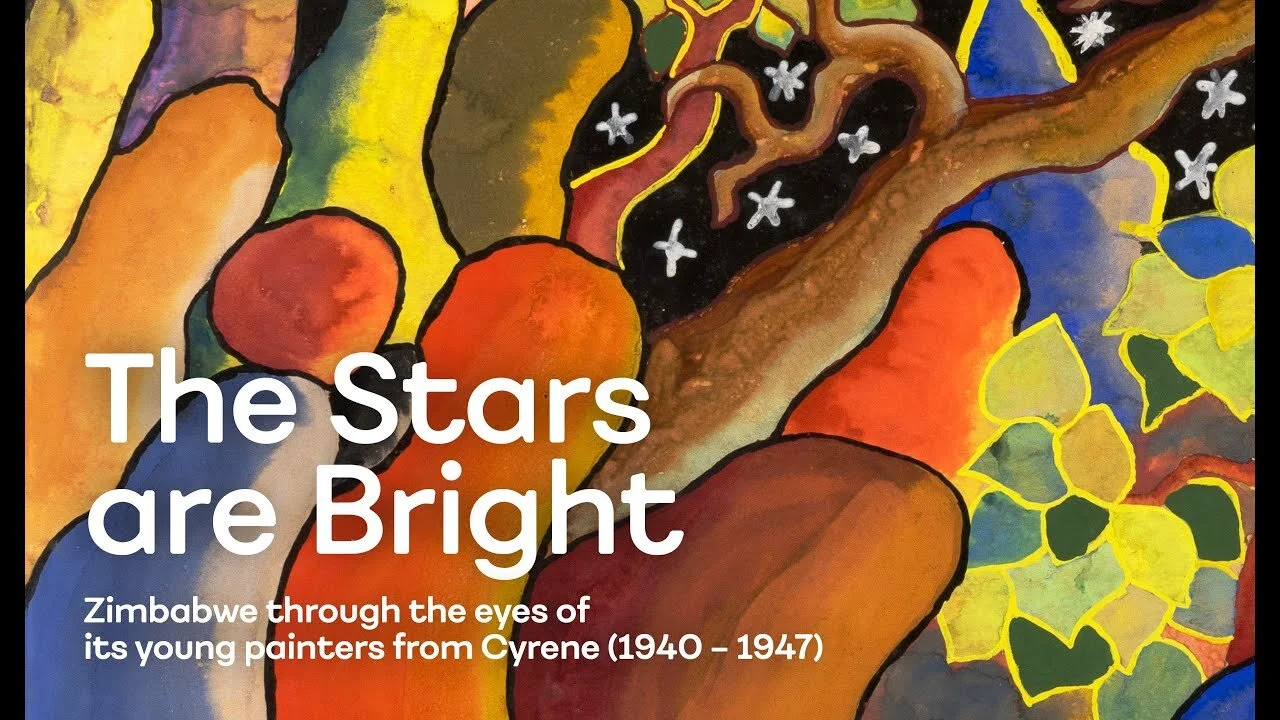The Stars are Bright
It’s always a moment of joy when you stumble upon a collection of art which delivers more than promised at the gallery entrance, even more so when that collection comes with a backstory which feels like it slipped through the cracks of history and seems so niche that you leave possessed by an obligation to spread the word to as many as you can.
So we come to a small space off Bateman’s Row, Shoreditch, where on, what turned out to be the last day of its already extended run, we were lucky enough to spend an hour in the company of a collection of mid century watercolours from the Cyrene school of Zimbabwe. Based in Bulawayo, the Cyrene Mission school was established in 1938 by Edward “Ned” Paterson, a Scottish clergyman, raised in South Africa, who on completing his military service in what is now Namibia, took an army scholarship to study at the Central School of Arts and Crafts in London, better known these days as St Martins.
The Cyrene school was, at the time, among the first such institutions to have been established in Zimbabwe, then Southern Rhodesia, and while it aimed to impart to its students, who were all from poor rural communities, a balanced curriculum, it is clear from looking at the vibrant works of art comprising this collection, that Paterson’s own passion for art, informed by his background studies at St Martins, clearly introduced something of a bias!
The students were all encouraged to express themselves freely with their painting, and to capture their own experience as young African men, their aspirations, their passions, and their relationships with their environment. Walking through the space initial works felt like the impressionistic landscapes of Van Gogh, with broad, bold brush work, fused with the colour palette you might expect to find in a piece by Chagall, vibrant, bright hues were employed by most of the students in their bidding to tell the story of their lives. One piece showed a young boy moving through various stages of his life through to the point at which, clad in a suit and holding a case, he is returning from his job in the city to liberate his family from the poverty of a rural life. Several other pieces illustrated the natural beauty surrounding the students, with an accompanying commentary pointing out that the boys would often paint thousands, rather than mere hundreds of leaves on a tree, given that they were free of the myriad distractions which might encumber the artist these days, having been provided with a specialised space in which to contemplate nothing but the pursuit of art.
In 1947 the Queen Consort, wife of King George VI, visited the school, later acquiring one of its works for the Royal Collection. Such recognition galvanised Paterson into organising a series of exhibitions across Africa from 1942, the last of which was held in South Africa before being taken to London. Comprised of 200 large paintings, 1,200 smaller pieces, and numerous wood carvings and stone sculptures, the collection opened on 11 January 1949 at the galleries of the Royal Society of Painters in Water-Colours (now the Royal Watercolour Society) to great acclaim. Off the back of this success the collection toured England, Paris, and the United States, with a second exhibition in London in 1953. All that Paterson had done to spread awareness of the Cyrene School and its talented alumni left a legacy which saw Cyrene works being purchased by the Smithsonian in Washington, as well as a number of collectors in Britain.
Subsequently a large number of works from the 1949 collection were thought to have been lost or misappropriated, whereas years later it transpired that, in fact they had been stored within an annexe of the St Michael & All Angels church in Shoreditch, only a short walk from where they were being viewed by us as part of this exhibition. As to the future, the collection will now return to its homeland for the first time since 1940 to tour Zimbabwe. Should it return to the UK at some point in the future we thoroughly recommend making the effort to go and see what is a fascinating chapter in the wider story of African art.

